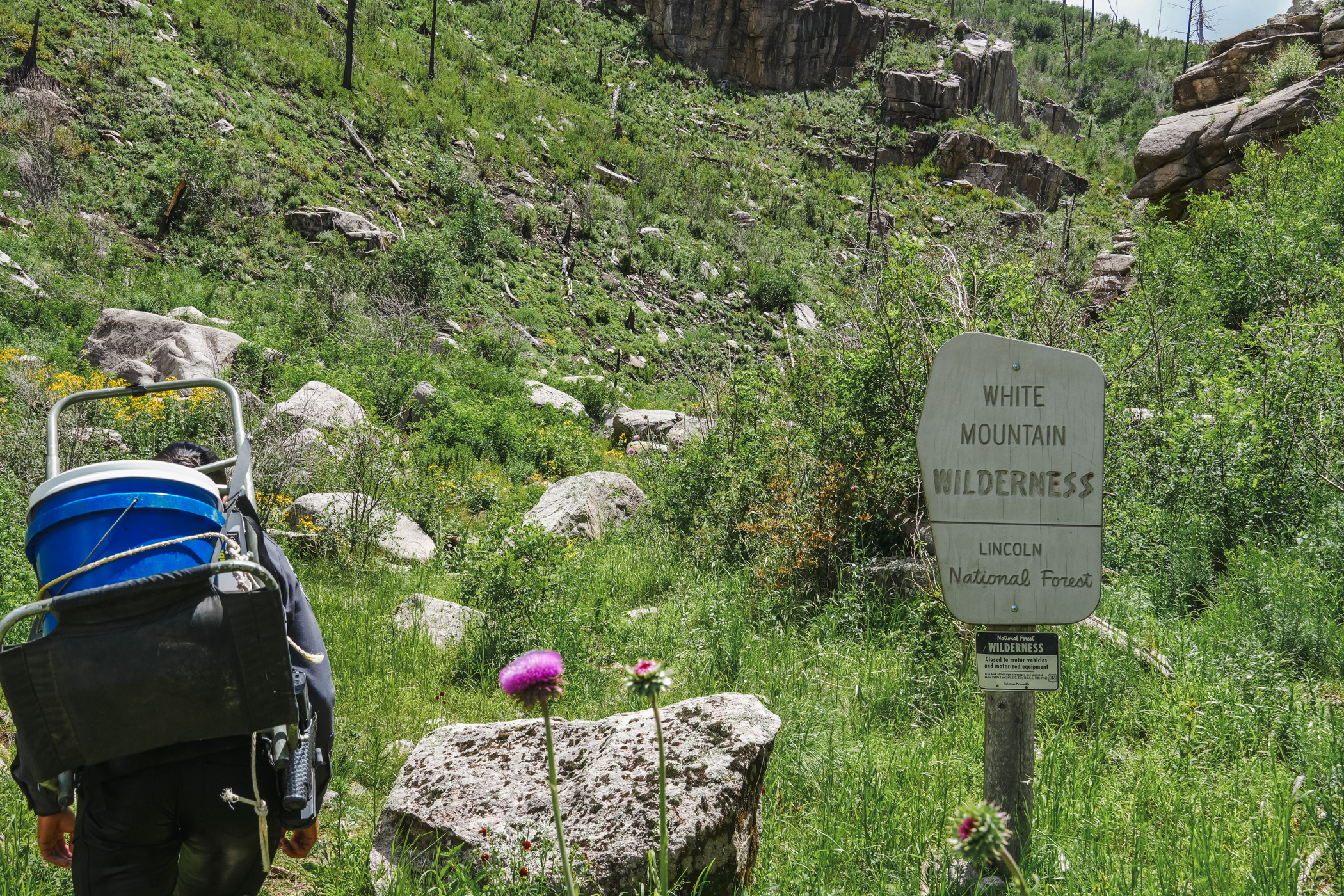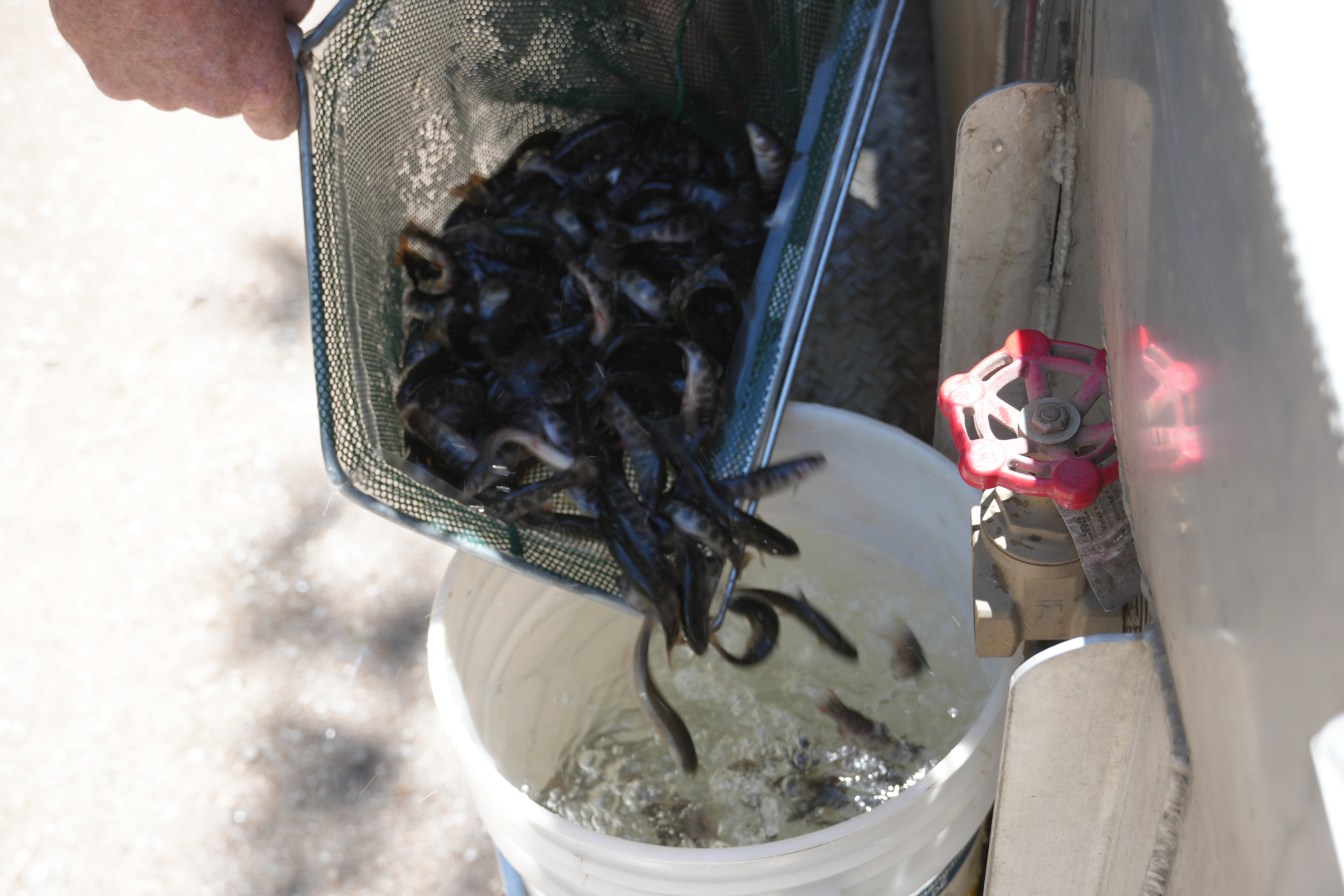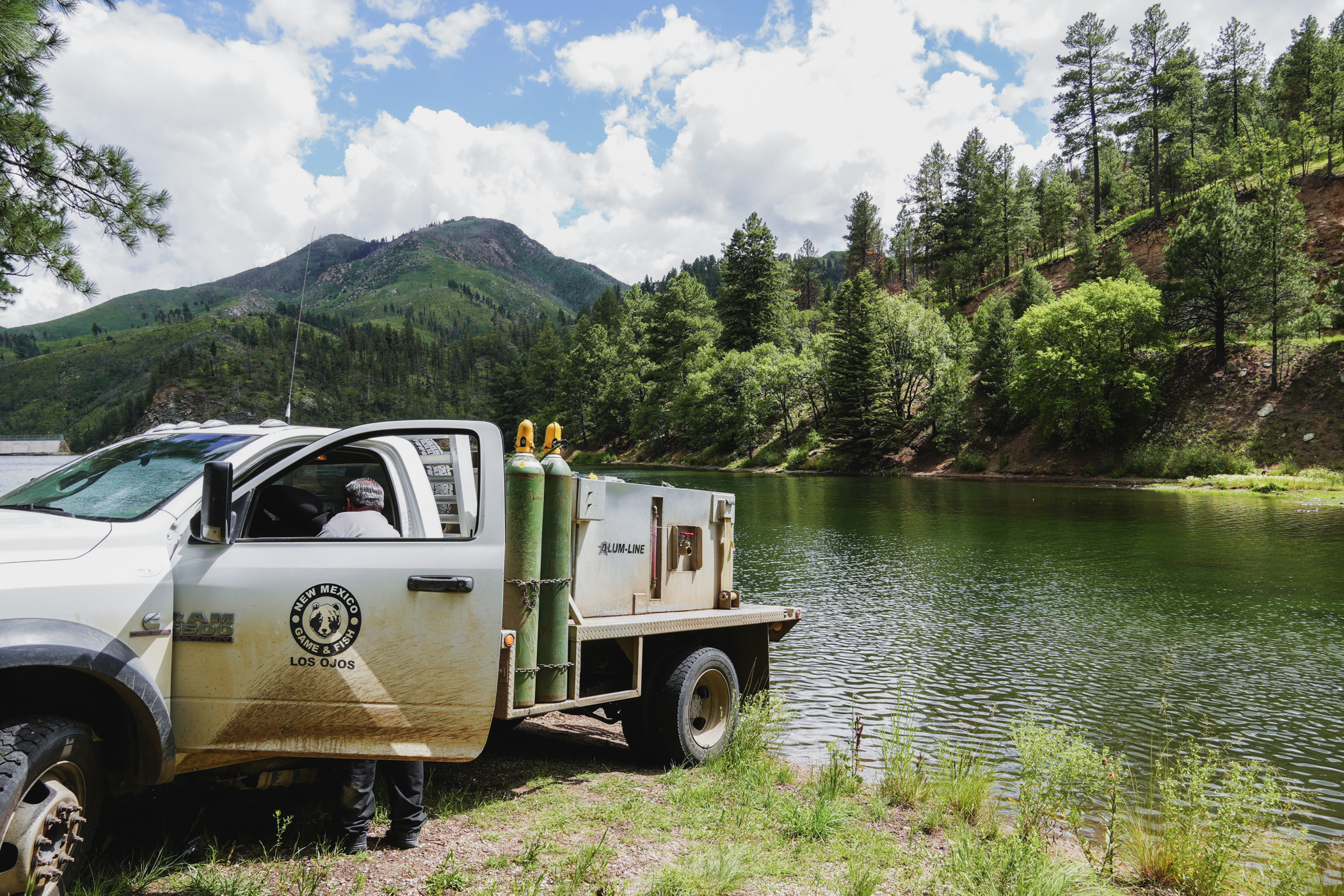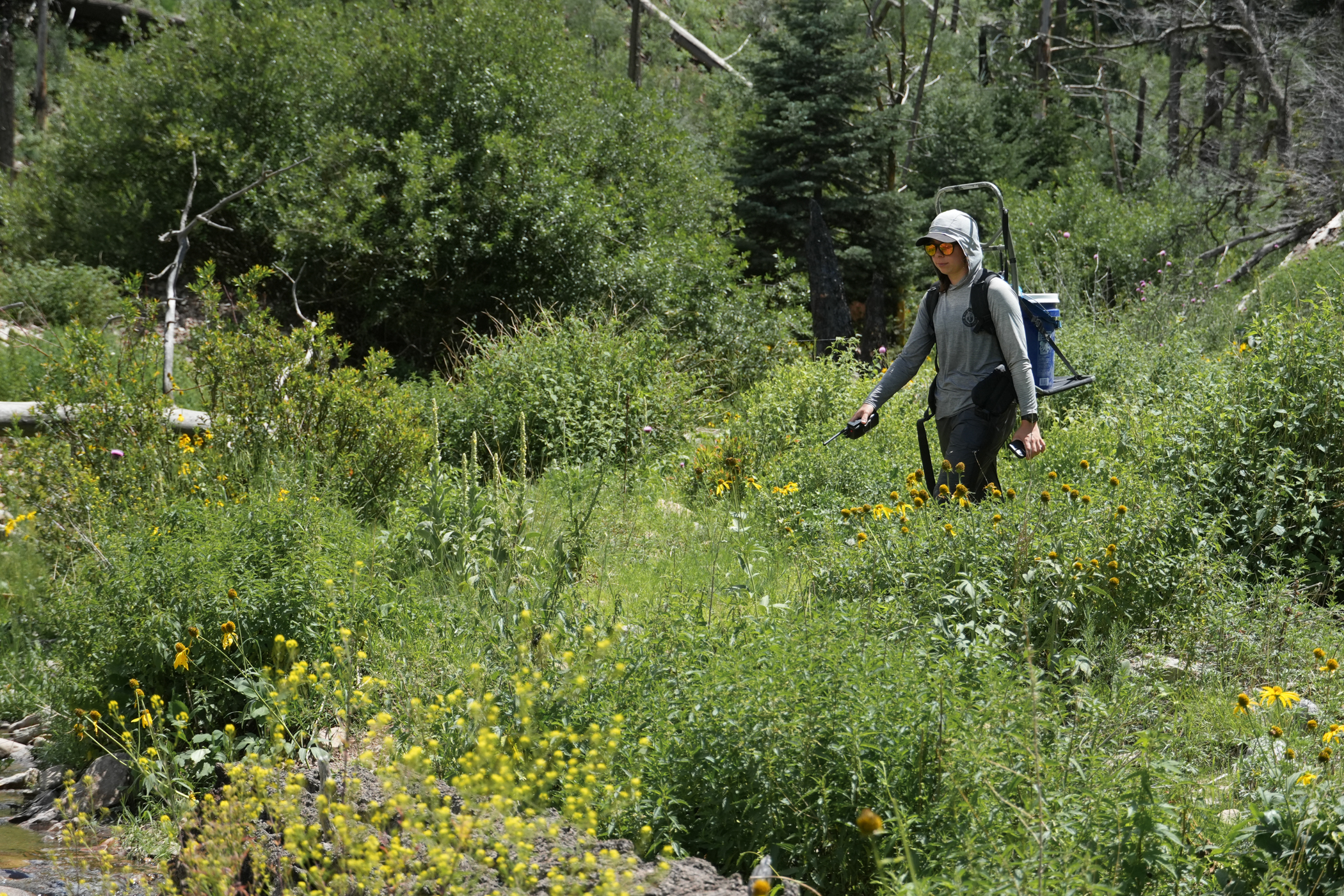Stocking YY brook trout in the Rio Bonito requires Department staff to hike through Lincoln National Forest with a bucket of fish.
By Melissa Garnett
Fish don’t usually hike up mountains, but on the backs of conservation officers and fish biologists from the New Mexico Department of Game and Fish, they travel to picturesque habitat upstream of Bonito Lake near Ruidoso.
These YY brook trout – so named because they have two Y chromosomes – are finishing their long journey. Originally, from a hatchery in Idaho as eggs, they traveled to the Department’s Los Ojos Fish Hatchery, located south of Chama where they incubates, hatched and start grow. They were then loaded on a truck bound for the Rio Bonito near Ruidoso, where they will live as part of the Departments long-term effort to restore Rio Grande cutthroat trout.
The Department has been stocking YY brook trout since 2018 and plans to continue the Rio Bonito project for at least two more years. Karly Phillips, a native fish biologist for the Department, led the charge up the canyon carrying trout on her back. It’s the only way to get these fish into some of the remote mountain streams where the habitat is most suitable. With her, local conservation officers and a new recruit, Officer Alyssa Flores, assisted with the stocking. This stocking came during Flores’ first week of field officer training, giving her a great introduction to the variety of projects that the Department’s officers are involved in.
From left: YY brook trout are transferred into a bucket before being stocked; a Department hatchery truck backs up to Bonito Lake to stock fish; a hike through the White Mountain Wilderness carries YY brook trout from the truck to their new home in the Rio Bonito.
Males don’t usually have two Y chromosomes. YY technology is a well-studied and widely used fisheries management tool. These YY brook trout carry two Y chromosomes instead of an X and Y, and can only produce males when they spawn. When paired with removals of fish, the population becomes skewed toward males over time. With fewer females in the population, fewer trout are born, and fisheries managers can control the population of non-native fish, restore native trout, and maintain great fishing the whole time. In time, the goal is to introduce native species, namely Rio Grande cutthroat trout, once the population of non-native species is more controlled, Phillips said.
Once the trout are stocked in the stream, the team met back down at Bonito Lake, where the remainder were released. Bonito is one of the Department’s Open Gate properties – a privately owned property that has entered into an agreement with the Department to allow members of the public to access the property under certain guidelines. The lake, considered a gem for a weekend fishing excursion, is open for fishing, but not for boating or swimming.
A bucket full of YY brook trout finds a new home in the Rio Bonito above Bonito Lake.
Someday, anglers may spend their weekends at Bonito Lake targeting Rio Grande cutthroat trout there after the YY brook trout have done their important work. In the meantime, brook trout will continue to be part of the lake’s recreational fishery.
Melissa Garnett is the Public Information Specialist in the Southeast Area for the New Mexico Department of Game and Fish.





